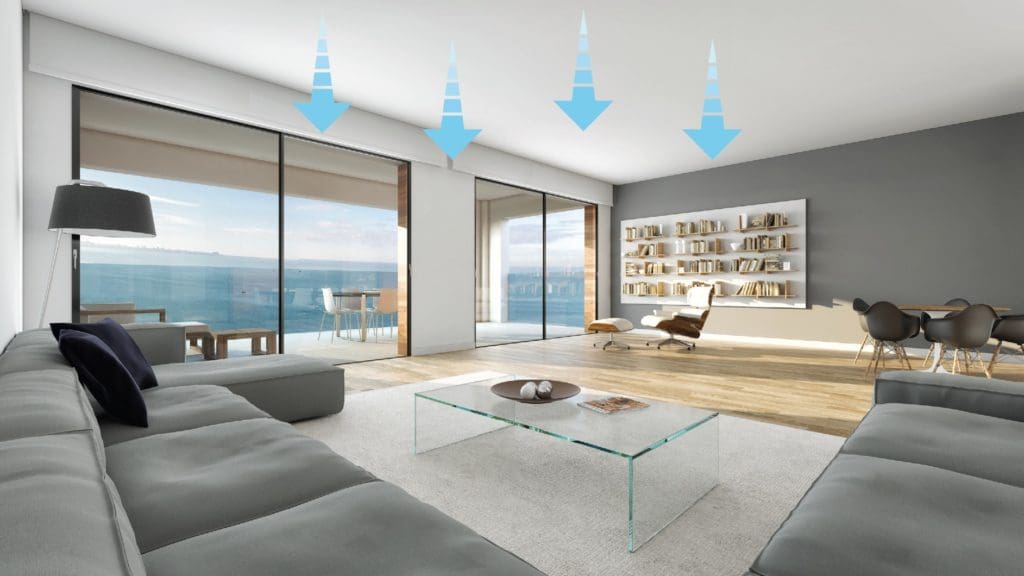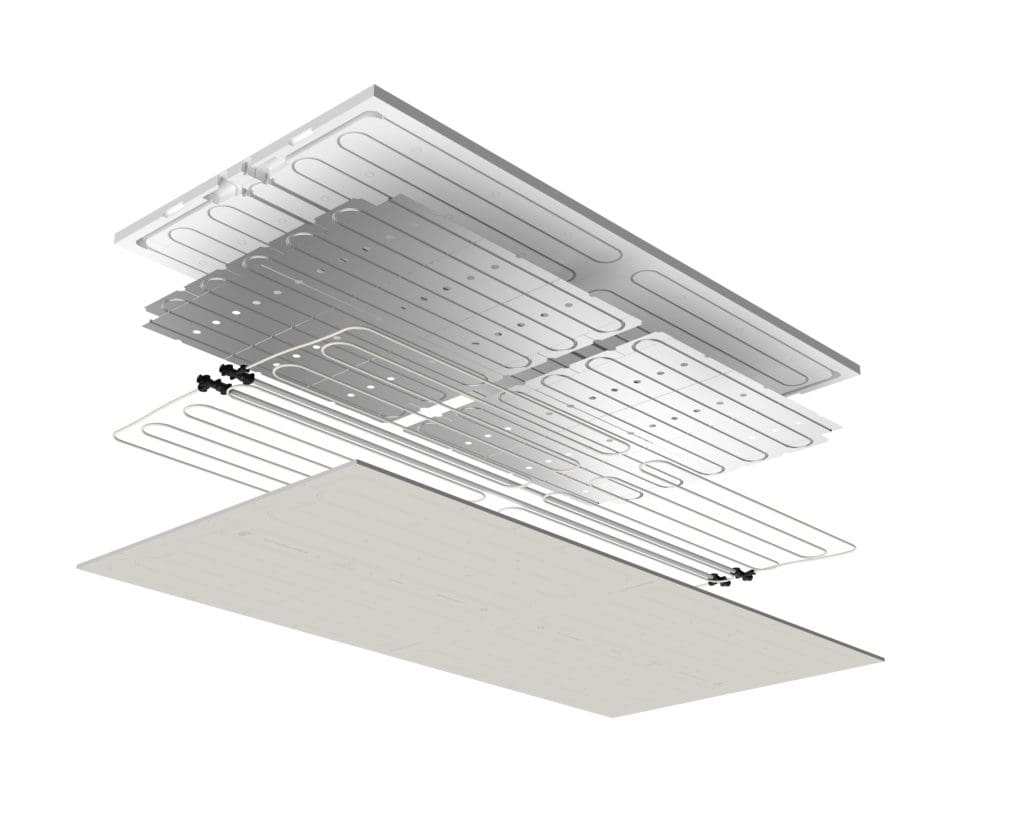Here, Greg Cooper, managing director at Radiana, explains why installing radiant cooling technology not only addresses this key problem, but also improves wellbeing, offers energy savings and reduces a property’s carbon footprint.
Residential overheating in a nutshell
“With the changes in Part L of the building regulations being introduced in June 2022 and ever-increasing building fabric standards, the challenge of overheating has come firmly into the spotlight. This issue is also compounded by the government’s move to decarbonise not only the UK’s new-build housing stock, but also existing homes, as part of its commitment to reduce carbon emissions to net zero by 2050.

“A newly built home is already required to meet an array of standards, as well as being sustainable, energy efficient and keep the health of residents front of mind. These requirements, coupled with the prediction of rising ambient outdoor temperatures and the trend to maximise natural daylight with extensive glazing, can quickly lead to internal temperatures rising to uncomfortable and unhealthy levels.
“The challenge for installers looking to combat residential overheating is to find a solution which protects occupants from the health issues associated with overheating, all whilst being environmentally friendly and energy efficient.”
Solutions inspired by nature
“To truly address the issue of overheating and provide complete thermal comfort, rather than residents seeking retrofit solutions, it’s key to incorporate efficient cooling technology into the very fabric of a property.
“Radiant cooling systems work by absorbing the heat radiated from objects and the rest of the room through cold surfaces. This is achieved by passing cold water through pipes which are hidden within plasterboard style panels, which in turn cools all the surfaces in the room.

“When 70% of the ceiling surface area is fitted with ‘active’ radiant cooling panels the result is a highly desirable ‘3D cooling’ effect, with no hot or cold spots within a room. This creates the ultimate thermal comfort for homeowners and greatly improved air quality.
“By its very nature this responsive, silent running, radiant energy transfer method is also not dependant on the movement of cold air to cool the space – meaning there are no uncomfortable draughts and issues with virus particles circulating, which are just some of the negative aspects associated with air conditioning.
“Coupled with an intelligent control system, radiant cooling panels also provide total flexibility allowing installers to create different temperature zones within the property, or even within an single open plan room, depending on solar gain and the homeowner’s personal preferences.”
“In comparison to air conditioning, radiant cooling technology ensures a much simpler commissioning process and removes the need to sequence hot works or handle ozone damaging gases. These are often aspects of a build which can cause delays and issues on site when traditional air conditioning has been specified and needs to be commissioned.”
Ready for renewables
“Creating a zero-carbon solution, when coupled with an air source heat pump (ASHP), radiant cooling systems works in the same way the energy source would with underfloor heating, instead, the pipes are in the ceiling and can provide both radiant cooling and heating.
“As water can carry 3,500 more times the energy than air, together this technology pairing can also achieve energy savings of between 20 and 40%, when compared with air conditioning. A radiant system can also maximise the heat pump’s efficiency because it can run consistently at a higher temperature compared to air only systems, as radiant cooling runs typically at 10°C rather than the 7°C required by traditional systems.”